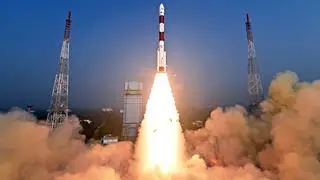Soumya Swaminathan, a Deputy Director-General of the World Health Organisation has been named Chief Scientist of the WHO.
As Deputy Director-General Programmes (DDP), she was one of the three DDGs assisting WHO Director-General Tedros Adhanom Ghebreyesus.
Talking to BusinessLine , Soumya Swaminathan confirmed: “Yes. I am now Chief Scientist, a newly created position and division.”
The new position, a component of Ghebreyesus’s long-standing idea of ushering in reforms at the WHO, has specially been created for Swaminathan. In a note, Ghebreyesus said, “What will be announced today will be the result of your ideas. For the past 18 months, they (WHO officials) have been relentless in conducting a root-and-branch examination of what we do, why we do it, and how we can do it better.”
Fifth Pillar
The new division is being seen as the fifth pillar to strengthen the WHO’s core scientific work, ensure quality and consistency of norms and standards. .
A WHO note stated, “WHO’s new corporate structure is based on four pillars which will be mirrored throughout the organisation.”
The Emergencies Pillar will be responsible for WHO’s critical health security responsibilities, both in responding to health crises and helping countries prepare for them. The External Relations and Governance Pillar will centralise and harmonise WHO’s work on resource mobilisation and communications.
The Business Operations Pillar will ensure more professionalised delivery of key corporate functions such as budgeting, finance, human resources and supply chain.
Digital health
Tshidi Moeti, Regional Director for Africa, said: “Science is changing at a rapid pace. WHO must not just keep up, but we must be ahead of the curve, setting the agenda, driving research and innovation, and ensuring it works for people. The new division will ensure WHO anticipates and stays on top of the latest scientific developments.
“For example, t he development of gene editing technologies has raised important scientific, ethical, social and legal questions. To address that, we recently established an expert panel on gene editing, bringing together the best minds from across the globe. It willhelp us define the boundaries between the potential opportunities and harms of this frontier technology.”
Another key area of the Chief Scientist’s work will be to keep WHO ahead of the curve by overseeing our work on digital health and innovation, Moeti added.
WHO has a unique role to play in advising countries on how to maximise the opportunities of digital technologies, while avoiding the pitfalls with appropriate regulation, officials said.
Inspite of doing cutting-edge work in digital health such as pushing out mass text messages for information on vaccination or working on software to monitor blood pressure or beginning a new collaboration with Google, in which they adopted our technical standards on physical activity in the Google Fit smartphone application or launching two new applications for mobile devices, , they are not sufficiently connected or coordinated, said Takeshi Kasai, Regional Director for Western Pacific.
Kasai said: “To spearhead our digital work, WHO is creating a new Department of Digital Health, in the Division of the Chief Scientist. This department will enhance our role in assessing digital technologies, and support countries to make decisions about how to prioritise, integrate and regulate them.”







Comments
Comments have to be in English, and in full sentences. They cannot be abusive or personal. Please abide by our community guidelines for posting your comments.
We have migrated to a new commenting platform. If you are already a registered user of TheHindu Businessline and logged in, you may continue to engage with our articles. If you do not have an account please register and login to post comments. Users can access their older comments by logging into their accounts on Vuukle.